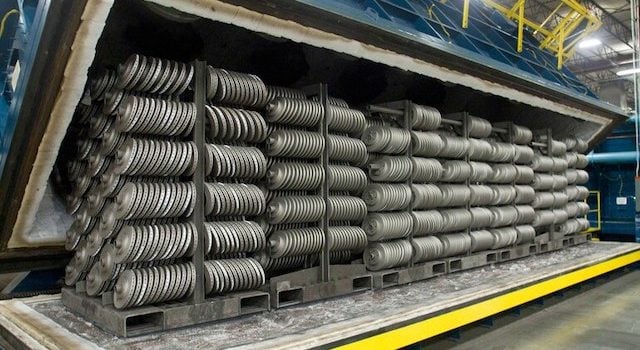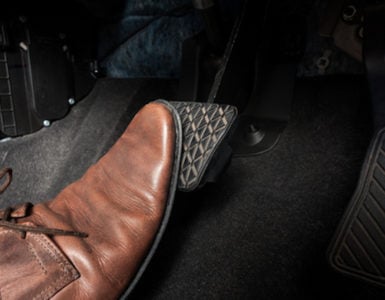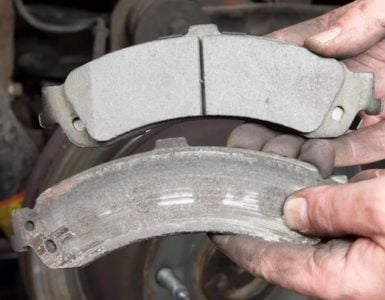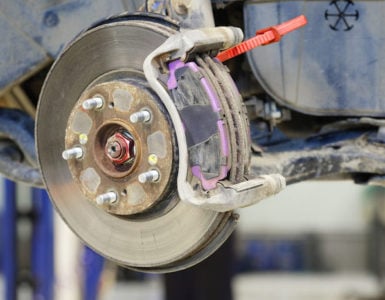Have you ever wondered how brake rotors are made? If so, today is your lucky day.
The brake rotor manufacturing process varies between manufacturers. Yet, the basic overview of the process remains the same across all solid rotors. Brake rotors have a simple design, and don’t require a ton of engineering and manufacturing know-how. The biggest concern for brake rotor manufacturers is safety and quality control.
What Are Brake Rotors Made From?

Most rotors are made of cast iron. It’s because cast iron is cheap, has good anti-wear properties, and can absorb heat well. Rotors developed for racing are made of a ceramic composite material. The ceramic composite material can operate at extremely high temperatures. As long as you use high quality rotors, you don’t have to replace them as often.
Brake rotors are pretty simple parts. They’re round discs. Yet, it’s important for the manufacturing process to go right every time. The rotor has to be the right size and thickness. It also needs to be perfectly round.
The equipment necessary for the manufacturing process is expensive and difficult to maintain. This may explain why there are only a few companies in the world that produce quality brake rotors. Here’s a list of the most common equipment used in rotor manufacturing:
- Blast furnaces
- Crucibles
- CNC drilling machines (for drilled and slotted rotors)
- CNC mills, which create the flat braking surface
The Brake Rotor Manufacturing Process
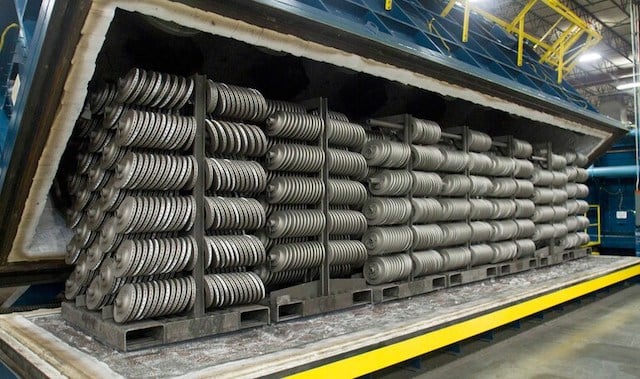
To sum it up, the manufacturing process involves pouring hot liquid iron into a mold and then letting it cool.
The first step of the manufacturing process is to create a mold. This is usually done by using a CNC mill to cut the reverse image of the rotor out of a block of steel. The mold needs to have exactly the right dimensions so this is an important step.
Next, the molten material is poured into the mold. When the mold is full, the top of the mixture is leveled. The mold is then covered and pressed lightly to compact the entire part. The manufacturing process for solid rotors typically takes place in a vacuum furnace. Next, the rotor is sent to a press, which exerts about 20 tons of pressure on it while heating it to about 400 degrees. This process compacts the rotor, which makes it much stronger.
The next step is precision milling and drilling. The braking surfaces are milled flat. Lug nut holes are drilled. If a rotor is to be drilled or slotted, this process will also occur. Drilled rotors have holes to dissipate heat and cut down on weight. Slotted rotors provide better ventilation during heavy braking conditions like racing.
When the rotor is in its final form, it’s polished and inspected for any structural defects.
The last step is to clean and package the rotors. The brake rotor may require additional treatments such as zinc chromate passivation before it can be packaged and shipped.
Overall, creating a quality brake rotor takes more than just pouring metal into a mold. It takes precision equipment and skilled labor. This is why you see so many different types of brake rotors. The basic manufacturing process is the same no matter what type of cast iron rotor you purchase.
